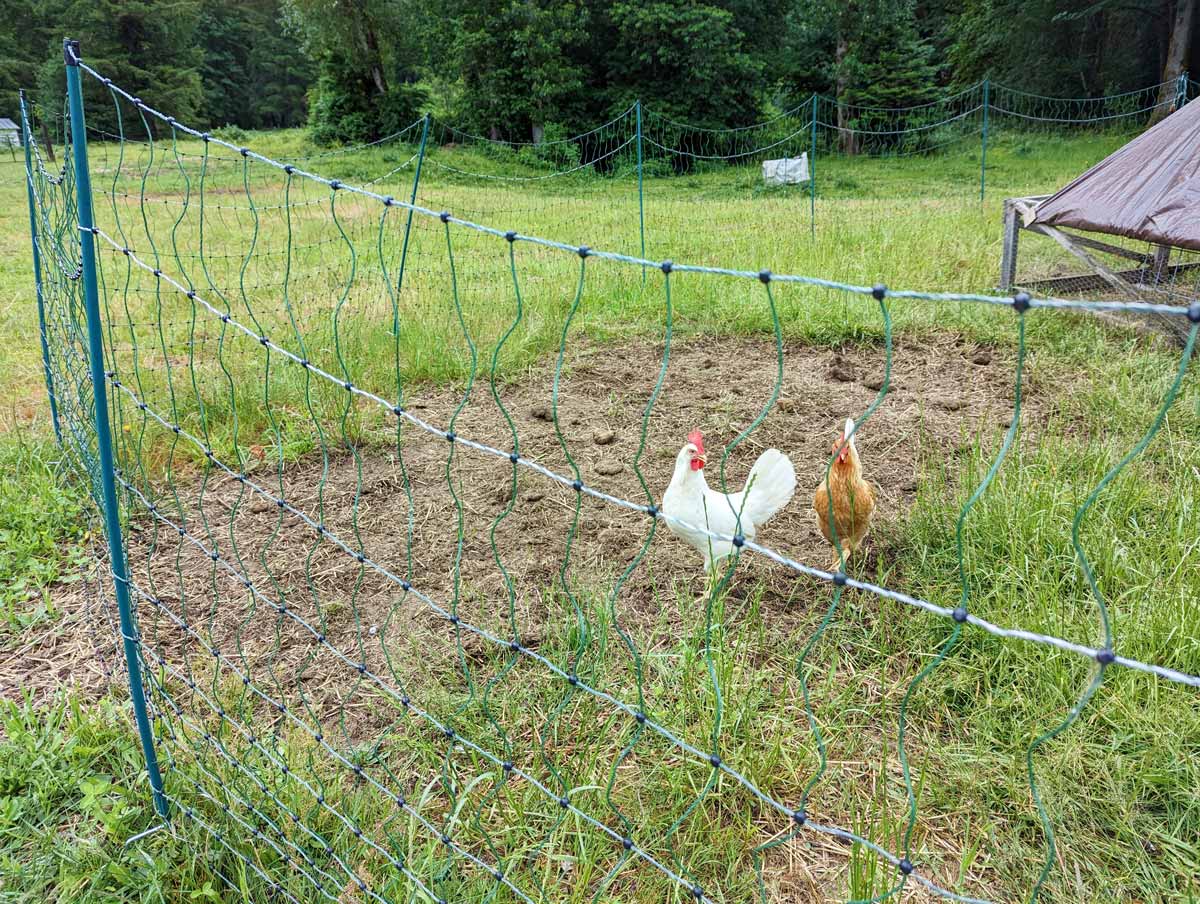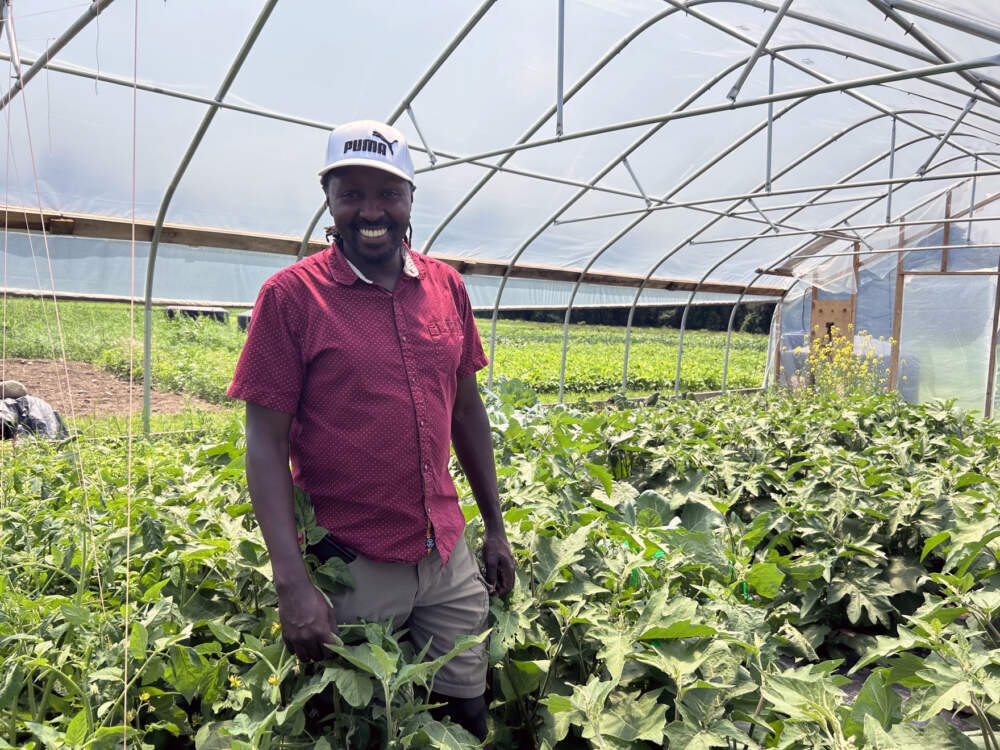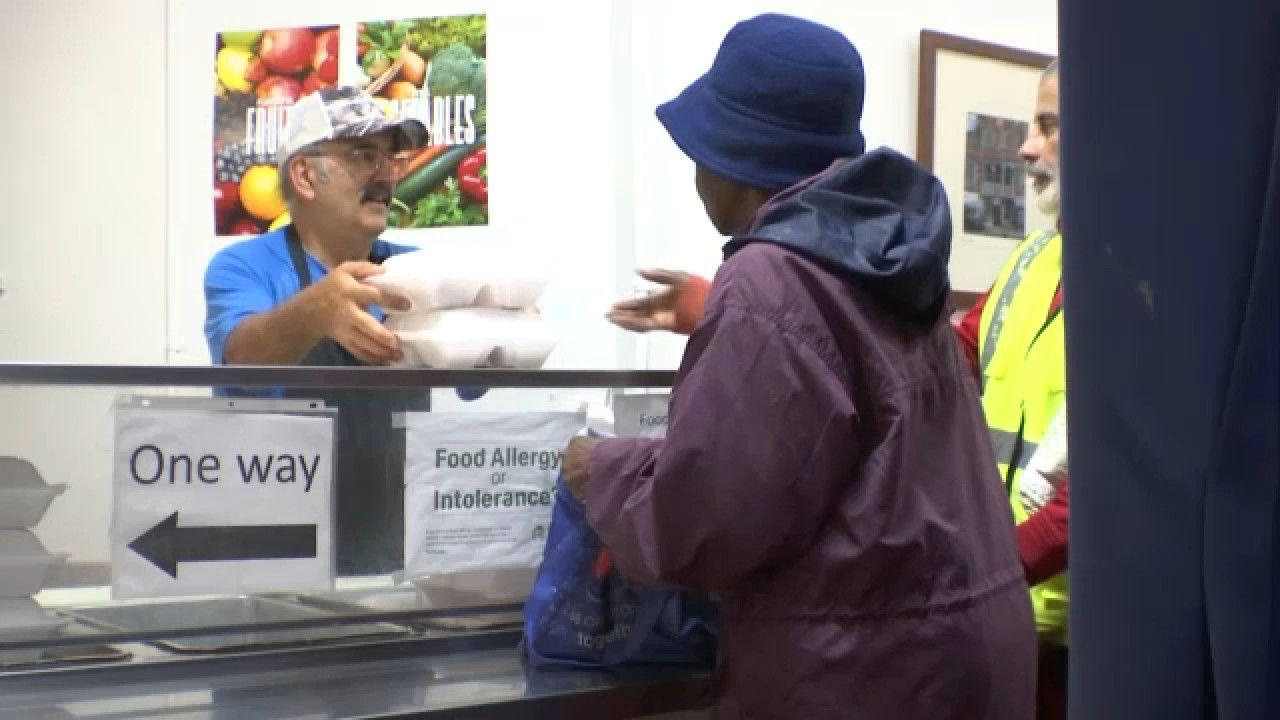House Ag holds hearing on MAHA threat, future of crop protection tools – The Fence Post

Report on the House Agriculture Committee Hearing on Agricultural Innovation and Crop Protection
Executive Summary
The House Agriculture Committee convened a hearing to examine past and future innovations in crop production, focusing on the regulatory environment for crop protection tools. The discussion highlighted a significant tension between the need for agricultural productivity to ensure food security and the health and environmental concerns associated with chemical inputs. Testimonies from industry leaders and producers underscored the critical role of innovation in advancing sustainable agriculture. The proceedings directly addressed several United Nations Sustainable Development Goals (SDGs), particularly those concerning food security, sustainable production, health, and innovation.
Key Issues and Debates in the Context of Sustainable Development
The hearing centered on the regulatory and public perception challenges facing modern agriculture, with significant implications for achieving global sustainability targets.
- Regulatory Framework and Innovation (SDG 9 & SDG 17): Chairman Glenn “GT” Thompson and other members emphasized the need for a science-based, transparent, and predictable regulatory environment. Delays and jurisdictional confusion were identified as major barriers to innovation, investment, and U.S. competitiveness, hindering progress toward SDG 9 (Industry, Innovation, and Infrastructure). The call for inter-agency collaboration and clear guidelines reflects the principles of SDG 17 (Partnerships for the Goals).
- Public Trust and Food Safety (SDG 2 & SDG 3): A major point of contention was the Make America Healthy Again (MAHA) Commission report and statements by HHS Secretary Robert F. Kennedy Jr. questioning the safety of herbicides and pesticides.
- Rep. Angie Craig argued that such statements, allegedly based on flawed data, erode public trust in the food system and regulatory bodies, impacting both SDG 2 (Zero Hunger) by threatening farmer viability and SDG 3 (Good Health and Well-being) by undermining confidence in public health institutions.
- Conversely, Rep. Jim McGovern and Rep. Alma Adams raised concerns about the potential deregulation of toxic pesticides and the rollback of reporting requirements, advocating for stronger protections to safeguard public health and the environment.
- Balancing Productivity and Sustainability (SDG 2 & SDG 12): The core of the debate involved balancing the need for high-yield crop production to maintain an abundant and affordable food supply (SDG 2) with the imperative for sustainable practices (SDG 12: Responsible Consumption and Production).
Stakeholder Testimonies and Proposed Solutions for Sustainable Agriculture
Witnesses provided expert perspectives on how to navigate these challenges and foster a more sustainable and productive agricultural sector.
- Terry Abbott, Council of Producers & Distributors of Agrotechnology:
- Defended the rigor of the U.S. pesticide regulatory system against what he termed “misinformation.”
- Stated that undermining the evidence-based system threatens progress toward responsible production patterns (SDG 12).
- Advocated for full funding for the EPA’s Office of Pesticide Programs and investment in applied research through Land Grant Universities to support SDG 9 and SDG 17.
- Don Cameron, Terranova Ranch Inc.:
- Highlighted the farmer’s perspective, explaining that crop protection tools are essential for meeting consumer demand for high-quality, affordable produce, which is fundamental to SDG 2 and SDG 3 (via nutritious diets).
- Emphasized that farmers strive to minimize inputs, aligning with the efficiency and waste-reduction principles of SDG 12.
- Karl Wyant, Nutrien:
- Introduced plant biostimulants as an innovative tool that enhances natural soil and plant processes, directly contributing to SDG 15 (Life on Land) by improving soil health and SDG 2 by boosting nutrient uptake and stress tolerance in crops.
- Argued that the lack of a federal definition for biostimulants creates regulatory uncertainty, impeding their adoption.
- Supported the Plant Biostimulant Act of 2025 as a key step to harmonize U.S. standards with international partners, fostering innovation (SDG 9) and partnerships (SDG 17).
- Bryan Witherbee, Agragene Inc.:
- Showcased gene editing as a targeted technology to control pests, offering a precise and potentially more sustainable alternative to broad-spectrum chemicals. This innovation supports SDG 12 by reducing chemical dependency and protecting biodiversity.
Conclusion: Aligning Agricultural Policy with the Sustainable Development Goals
The hearing underscored that the future of agriculture is inextricably linked to the Sustainable Development Goals. The path forward requires a multi-faceted approach that:
- Supports Innovation (SDG 9): Fostering new technologies like biostimulants and gene editing is crucial for sustainable intensification.
- Ensures Food Security (SDG 2): A stable and predictable regulatory system is necessary for farmers to produce the abundant, safe, and affordable food required to end hunger.
- Promotes Responsible Production (SDG 12): Encouraging the adoption of tools and practices that minimize environmental impact, improve soil health (SDG 15), and protect human well-being (SDG 3) is paramount.
- Strengthens Partnerships (SDG 17): Effective policy requires collaboration between government, industry, academia, and producers to build a resilient and sustainable food system for the future.
Which SDGs are addressed or connected to the issues highlighted in the article?
- SDG 2: Zero Hunger
- SDG 3: Good Health and Well-being
- SDG 9: Industry, Innovation, and Infrastructure
- SDG 12: Responsible Consumption and Production
- SDG 15: Life on Land
- SDG 17: Partnerships for the Goals
What specific targets under those SDGs can be identified based on the article’s content?
-
SDG 2: Zero Hunger
- Target 2.1: End hunger and ensure access by all people, in particular the poor and people in vulnerable situations, including infants, to safe, nutritious and sufficient food all year round. The article directly addresses this by emphasizing the goal of maintaining “the most abundant, affordable, and safest food supply in the world” and providing “consumers with access to fresh, affordable, and safe food.”
- Target 2.4: Ensure sustainable food production systems and implement resilient agricultural practices that increase productivity and production, that help maintain ecosystems, that strengthen capacity for adaptation to climate change, extreme weather, drought, flooding and other disasters and that progressively improve land and soil quality. The article discusses various agricultural practices, including the use of crop protection tools, biostimulants that support “overall plant and soil health,” and both conventional and organic farming methods. The debate centers on how to best ensure the “reliable production of appealing, high-quality fresh produce.”
- Target 2.a: Increase investment, including through enhanced international cooperation, in rural infrastructure, agricultural research and extension services, technology development and plant and gene banks in order to enhance agricultural productive capacity. The article highlights a call for “increased federal investment in applied research and demonstration projects through Land Grant Universities and regional Centers of Excellence” to advance agricultural technology.
-
SDG 3: Good Health and Well-being
- Target 3.9: Substantially reduce the number of deaths and illnesses from hazardous chemicals and air, water and soil pollution and contamination. The core of the hearing is the debate over the safety of “herbicides and pesticides.” Concerns are raised about the potential deregulation of “toxic pesticides” and the need for a rigorous system to assess the impact of chemicals on “people, food and the environment” to protect public health.
-
SDG 9: Industry, Innovation, and Infrastructure
- Target 9.5: Enhance scientific research, upgrade the technological capabilities of industrial sectors in all countries, in particular developing countries, including, by 2030, encouraging innovation and substantially increasing the number of research and development workers per 1 million people and public and private research and development spending. The article focuses heavily on agricultural innovation, mentioning “plant biostimulants,” “gene editing technology,” and the need to “help innovators” by reducing barriers. The risk of losing “investment and competitiveness” due to regulatory hurdles is a key concern.
- Target 9.b: Support domestic technology development, research and innovation in developing countries, including by ensuring a conducive policy environment. The article discusses the “Plant Biostimulant Act of 2025,” which aims to create a clear federal definition for biostimulants to prevent them from being “wrongly treated as pesticides,” thereby reducing unnecessary costs and compliance uncertainty, which fosters a better policy environment for innovation.
-
SDG 12: Responsible Consumption and Production
- Target 12.4: By 2020, achieve the environmentally sound management of chemicals and all wastes throughout their life cycle, in accordance with agreed international frameworks, and significantly reduce their release to air, water and soil in order to minimize their adverse impacts on human health and the environment. The entire discussion about the EPA’s role, the “rigorous” U.S. pesticide regulatory system, and the need for proper assessment of “new chemicals and technologies and their impact on our people, food and the environment” directly relates to this target. A specific concern is raised about a rule change meaning “farmers no longer have to record information on the use of restricted pesticides.”
-
SDG 15: Life on Land
- Target 15.3: By 2030, combat desertification, restore degraded land and soil, including land affected by desertification, drought and floods, and strive to achieve a land degradation-neutral world. The article mentions that biostimulants work by “enhancing the plant’s or the soil’s natural processes” and “supporting overall plant and soil health,” which is a practice aimed at improving land quality.
-
SDG 17: Partnerships for the Goals
- Target 17.14: Enhance policy coherence for sustainable development. The article highlights a lack of policy coherence, citing “confusion about which agency has jurisdiction,” reviews that “take years with no clear rationale,” and the need for a “regulatory environment that is grounded in science, transparent in its decision-making, and predictable in its timelines and outcomes.”
- Target 17.17: Encourage and promote effective public, public-private and civil society partnerships, building on the experience and resourcing strategies of partnerships. The hearing itself is an example of a public partnership. The article also mentions collaboration between “industry and advocacy groups,” the proposed bipartisan “Plant Biostimulant Act of 2025,” and the call to direct USDA’s Natural Resources Conservation Service to work with industry to update standards.
Are there any indicators mentioned or implied in the article that can be used to measure progress towards the identified targets?
-
SDG 2: Zero Hunger
- Indicator for Target 2.1: The affordability and availability of food. The article refers to the goal of an “abundant, affordable, and safest food supply” and the production of “appealing, high-quality fresh produce.” The price and quality of produce in grocery stores are implied indicators.
- Indicator for Target 2.a: The level of public and private investment in agricultural R&D. The article explicitly calls for “increased federal investment in applied research” and “full funding for EPA’s Office of Pesticide Programs,” making funding levels a direct indicator.
-
SDG 3: Good Health and Well-being
- Indicator for Target 3.9: Strength and integrity of the regulatory review process for chemicals. The article mentions the need for a “rigorous” regulatory system and expresses concern over the “haphazard firing of technical staff and scientists responsible for properly assessing new chemicals.” The number and quality of scientific staff and the thoroughness of safety assessments are implied indicators.
-
SDG 9: Industry, Innovation, and Infrastructure
- Indicator for Target 9.5: The efficiency of the regulatory approval process for new technologies. The article points to the “registration backlog” at the EPA, which “still affects hundreds of pending actions,” and regulatory “review times” as key indicators of barriers to innovation.
- Indicator for Target 9.b: The existence of a clear and science-based policy framework for new technologies. The proposed “Plant Biostimulant Act of 2025” to establish a “federal definition of ‘plant biostimulant’” is a specific policy indicator.
-
SDG 12: Responsible Consumption and Production
- Indicator for Target 12.4: The tracking and management of hazardous chemical use. The concern that “farmers no longer have to record information on the use of restricted pesticides” points to the existence and enforcement of such recording requirements as a key indicator for the sound management of chemicals.
-
SDG 17: Partnerships for the Goals
- Indicator for Target 17.14: Clarity and predictability of regulatory jurisdiction and timelines. The article cites “confusion about which agency has jurisdiction” and reviews that “take years with no clear rationale” as problems. Therefore, clarified jurisdictional lines and predictable review timelines would be indicators of improved policy coherence.
Table of SDGs, Targets, and Indicators
| SDGs | Targets | Indicators Identified in the Article |
|---|---|---|
| SDG 2: Zero Hunger | 2.1: Ensure access to safe, nutritious food. 2.4: Implement resilient agricultural practices. 2.a: Increase investment in agricultural research. |
– Abundance and affordability of the food supply. – Use of innovative tools (e.g., biostimulants) to support soil health. – Level of “federal investment in applied research.” |
| SDG 3: Good Health and Well-being | 3.9: Reduce illnesses from hazardous chemicals. | – Rigor and staffing of the regulatory system for assessing chemical safety. |
| SDG 9: Industry, Innovation, and Infrastructure | 9.5: Enhance scientific research and innovation. 9.b: Support domestic technology development with a conducive policy environment. |
– Size of the “registration backlog” for new products. – Regulatory “review times” for new technologies. – Establishment of a “federal definition” for new products like biostimulants. |
| SDG 12: Responsible Consumption and Production | 12.4: Achieve environmentally sound management of chemicals. | – Requirement for farmers to “record information on the use of restricted pesticides.” |
| SDG 15: Life on Land | 15.3: Combat land degradation and improve soil quality. | – Adoption of practices/products (biostimulants) that support “overall plant and soil health.” |
| SDG 17: Partnerships for the Goals | 17.14: Enhance policy coherence. 17.17: Promote effective partnerships. |
– Clarity of regulatory jurisdiction (“confusion about which agency has jurisdiction”). – Existence of bipartisan legislation (e.g., “Plant Biostimulant Act of 2025”). |
Source: thefencepost.com

What is Your Reaction?
 Like
0
Like
0
 Dislike
0
Dislike
0
 Love
0
Love
0
 Funny
0
Funny
0
 Angry
0
Angry
0
 Sad
0
Sad
0
 Wow
0
Wow
0

















































































